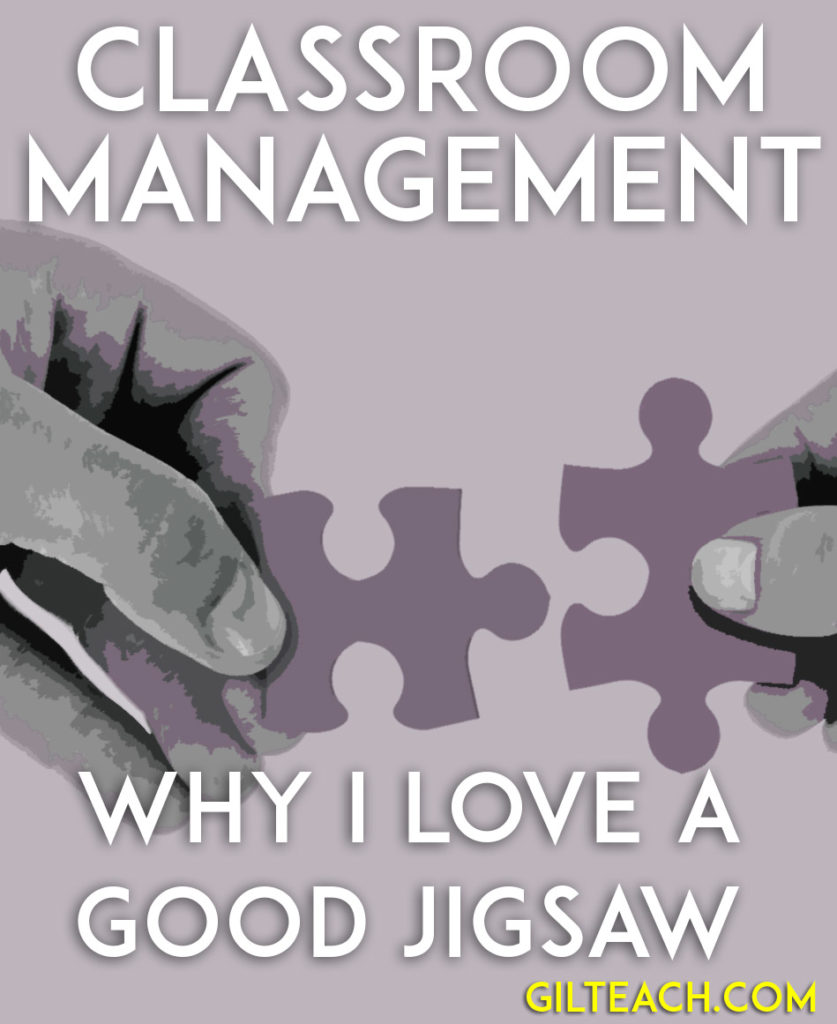Classroom Management: Why I Love a Good Jigsaw

Students moving around the room, talking to each other, sharing information, and teaching their peers—it’s sort of a teacher’s dream, and it’s what happens when I do a jigsaw activity with my students.
I use a jigsaw in three of my content-heavy resources: my Fake News and Digital Literacy Unit, my Growth Mindset Unit, and my Elements of Poetry Unit.

The basic idea of a jigsaw is that students learn a piece of the content and then teach that to their classmates. This is the process.
- First, they break up into groups. I tend to let them make their own groups, but this would depend on the class.
- In those small groups, they master one small piece of content. So each group of students might learn how to verify a tweet, why Malala Yousafzai succeeded because of her growth mindset, or how syntax functions to create meaning in a poem.
- Then they teach what they have learned. This exchange of content usually means simply finding peers to help them learn what they need to know. If I have time, it might take the form of a more formal presentation with visuals or a skit or video. Students generally have a chart to fill out with all of the information that they gain from their peers.
- Finally, students do something with the information that they have gained. This might be a quiz on all of the material or an essay explaining what they have learned or just a freewrite to compare and contrast.
If I haven’t convinced you yet to try a jigsaw activity in class, these are the reasons why I love a good jigsaw.
Everyone likes charts. Students feel accomplished and in control when they have a neat organized chart to fill out. This isn’t something that I would do every day, but it is a great addition to their notebooks and a nice way to organize as well as to compare and contrast content. Then, when they need to refer back to the information for an essay or to study for a quiz, they have it all there in a neat and organized way.
Teaching helps us learn There are few things that beat the sight of students explaining a new concept to each other. When students become the teachers, they master the material in a way that they never would as passive receivers of knowledge. They take control and make it their own, and when they look for new ways to explain to a struggling classmate, they understand it on a whole new level.
I get them out of their seats and talking to new people. One of my main goals as a teacher is to get students out of their comfort zone. Most of my students could easily talk to the same one or two classmates every day. They need a little push to move around and talk to kids on the other side of the room, but when they have it, they enjoy the process.
I can move around the room, checking in with different groups. I love a good full-class discussion, but I also love having the chance to talk one-on-one with students about their work. When they are engaged with an activity like a jigsaw, I get the chance to circulate about, checking in for understanding or just to chat for a few minutes with different groups. I get to know students in a new and more informal way, which I always enjoy.
In the end, students get a lot of content and they don’t have to sit passively through a lecture or powerpoint. I am always looking for ways to empower students to find their own answers, and the jigsaw is a great way to put the onus on them.